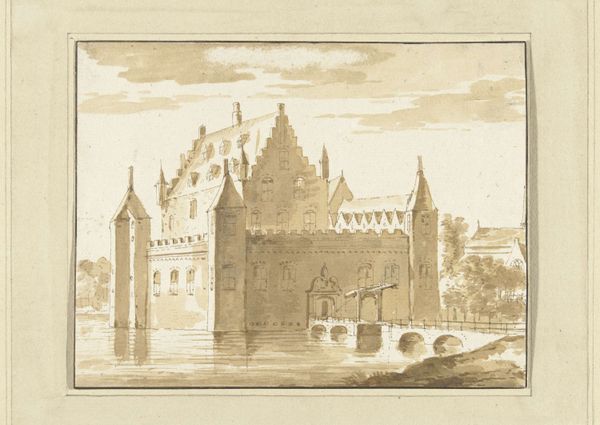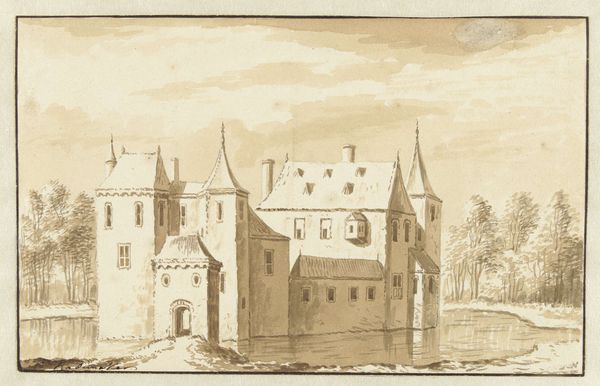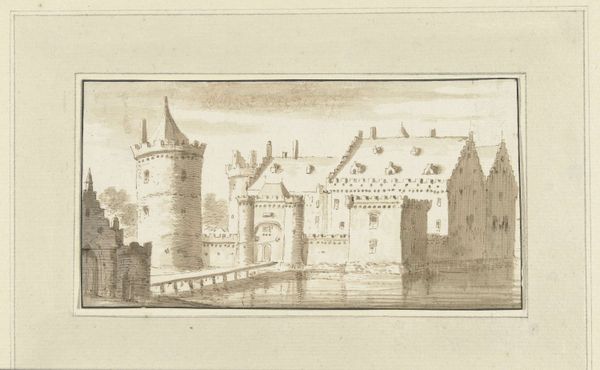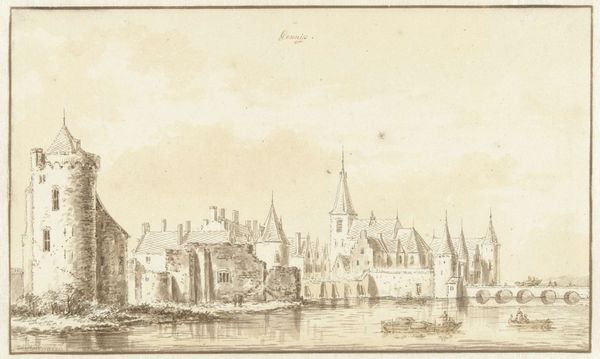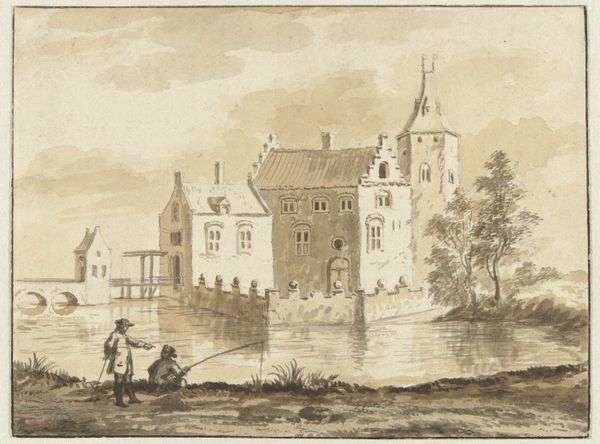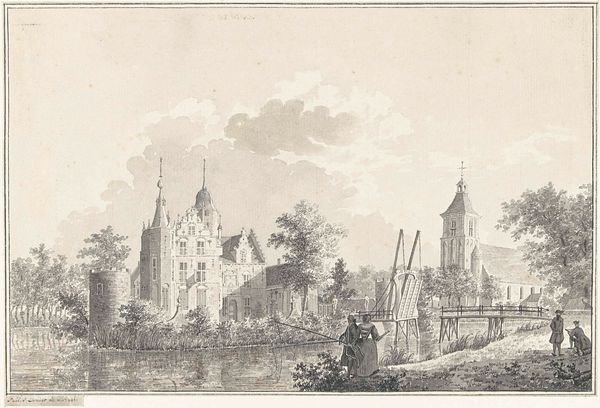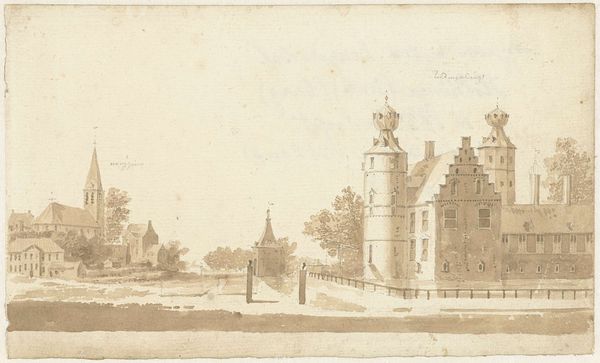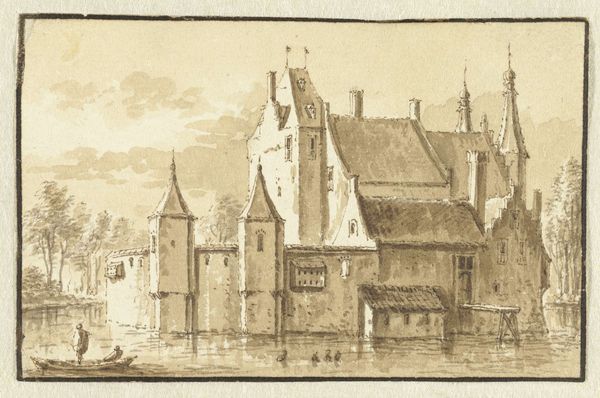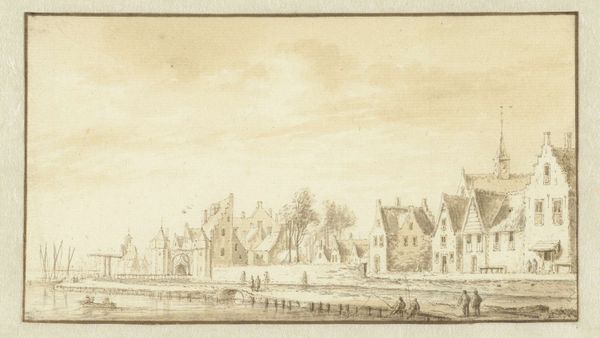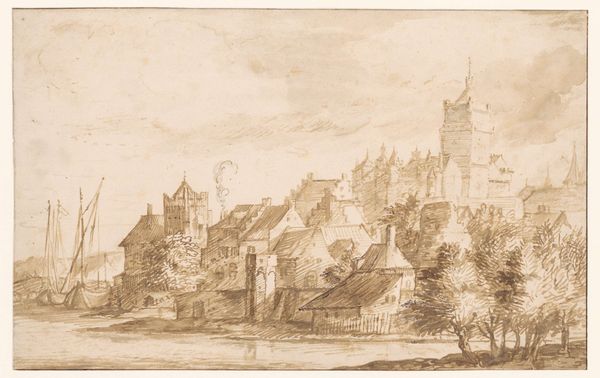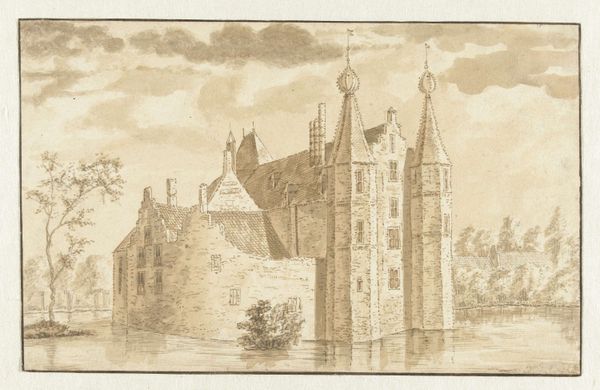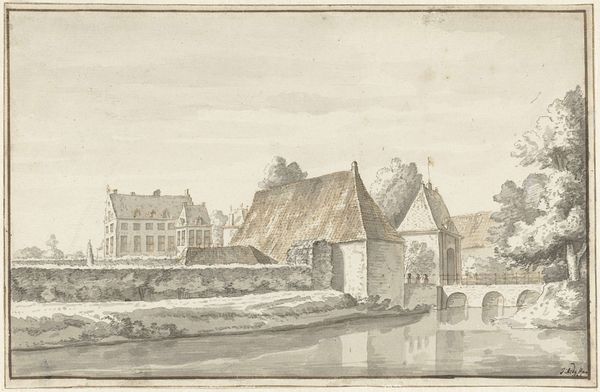
Gezicht op de Ketelpoort en de Rotterdamse Poort te Delft 1685 - 1735
0:00
0:00
drawing, watercolor
#
drawing
#
dutch-golden-age
#
landscape
#
watercolor
#
cityscape
#
watercolor
Dimensions: height 145 mm, width 280 mm
Copyright: Rijks Museum: Open Domain
Curator: Looking at this drawing, "Gezicht op de Ketelpoort en de Rotterdamse Poort te Delft," from somewhere between 1685 and 1735 and attributed to Abraham Rademaker, you’re immediately struck by how tranquil the scene is, don’t you think? Editor: Tranquil, yes, but almost haunting. It's in shades of grey and it really emphasizes the imposing structures that seem to almost be bearing down on the viewer, a potent representation of power and authority embedded within the landscape itself. Curator: Rademaker's landscapes offer us insight into how Dutch cities saw and presented themselves during the Golden Age. Think about the way that carefully drawn topography was intended to project an image of order, prosperity and stability. It was deeply connected to civic pride. Editor: Exactly! The way these cityscapes were curated also reinforces this idea that history is actively being constructed, that someone is carefully selecting and showing specific aspects of the cityscape and choosing to elide others, subtly perpetuating a specific narrative. Consider how class and labor are essentially erased. Curator: These detailed drawings also played a role in disseminating knowledge. They were essentially early forms of documentation. This is a watercolor drawing which allowed for the reproduction and distribution of these scenes among a wider public audience. It's not just about showing what Delft looked like, but who had access to that visual information and why that mattered. Editor: So, we’re talking about a meticulously rendered scene, seemingly neutral but actually saturated with the socio-political assumptions of its time, the deliberate promotion of a certain kind of national identity...I can't help but see these images of cities in terms of both belonging and exclusion. It prompts you to wonder who the gates are protecting. Curator: These cityscapes allowed for this developing collective understanding of space and place. While that feeling of belonging could definitely be manipulated, as you say, they are still vital pieces of urban history to analyze critically. Editor: Absolutely. And hopefully prompt us to think about who and what are represented – and, even more critically, what’s strategically left out – from the popular imagery we consume today. Curator: Yes, a deep dive into urban spaces in Dutch Golden Age art opens avenues to re-interpret ideas of power, visual control, and historical narratives. Editor: Exactly! Art serves as both a reflection and an active shaper of its culture.
Comments
No comments
Be the first to comment and join the conversation on the ultimate creative platform.
